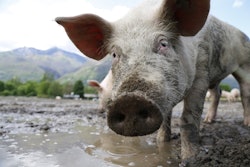USDA September Cattle on Feed Estimates
- Today, Sept. 20, is the USDA’s September Cattle on Feed report. Analysts surveyed by Reuters are looking for a soft decline in reported September 1 on feed cattle inventories from 2018.
- September 1 Cattle on Feed: 99.4% from September, 1 2018.
- August placements: 94.3% from August 2018. If realized this would be the fourth consecutive month of placement declines.
- August marketings: 98.3%. The decline in marketings can partly be attributed to the loss of processing capabilities after the fire at the Finney County Tyson plant in late August.
- The estimated September 1 on feed inventory levels are expected to show the first YoY decline since December 2016 and can be attributed to a 4 month decline in the monthly placement pace.
- FBN’s Take On What It Means For The US Farmer: We believe that the trend of ideal pasture conditions in much of the western corn belt combined with a strengthening local corn basis has continued to keep cattle on pasture rather than in the feedlot. Eventually these cattle on grass will come to market which could result in a late fall run. We believe that the recent performance of the CME cash feeder index and the October futures which are well behind 2018 levels appear to be capturing some of this supply driven sentiment.
Russia in Spotlight Overnight on Various Fundamentals
- African Swine Fever: Russia has reported a new outbreak of the virus at a private farm near China’s border.
- The fresh outbreak underscores that the virus still is not under control.
- Russia’s IKAR held its wheat production forecast at 75 million tonnes with risk to the upside. USDA is at 72.5 million tonnes.
- Russia has been working with Saudi Arabia on improving trade, particularly wheat, as Russia has not had access to that market.
- In a recent tender, Saudi Arabia purchased 780,000 tonnes of wheat of which some in the market estimate that 60 percent of the purchase could be of Russian origin.
- FBN’s Take On What It Means For The US Farmer: The new outbreak of ASF in Russia is not overly surprising as the virus continues to spread across Asia. Opportunities could present themselves for pork producers for some countries. However, the U.S. has not shipped pork to Russia since August 2014. For wheat, Russia continues to keep global prices under pressure. With access to Saudi Arabia, this is another blow to major exporters, the U.S. included. More concerning is if Russia’s 2019 wheat harvest is revised higher. A higher production from Russia likely would keep U.S. exports at 975 million bushels or possibly lighter.
The risk of trading futures, hedging, and speculating can be substantial. FBN BR LLC (NFA ID: 0508695)









